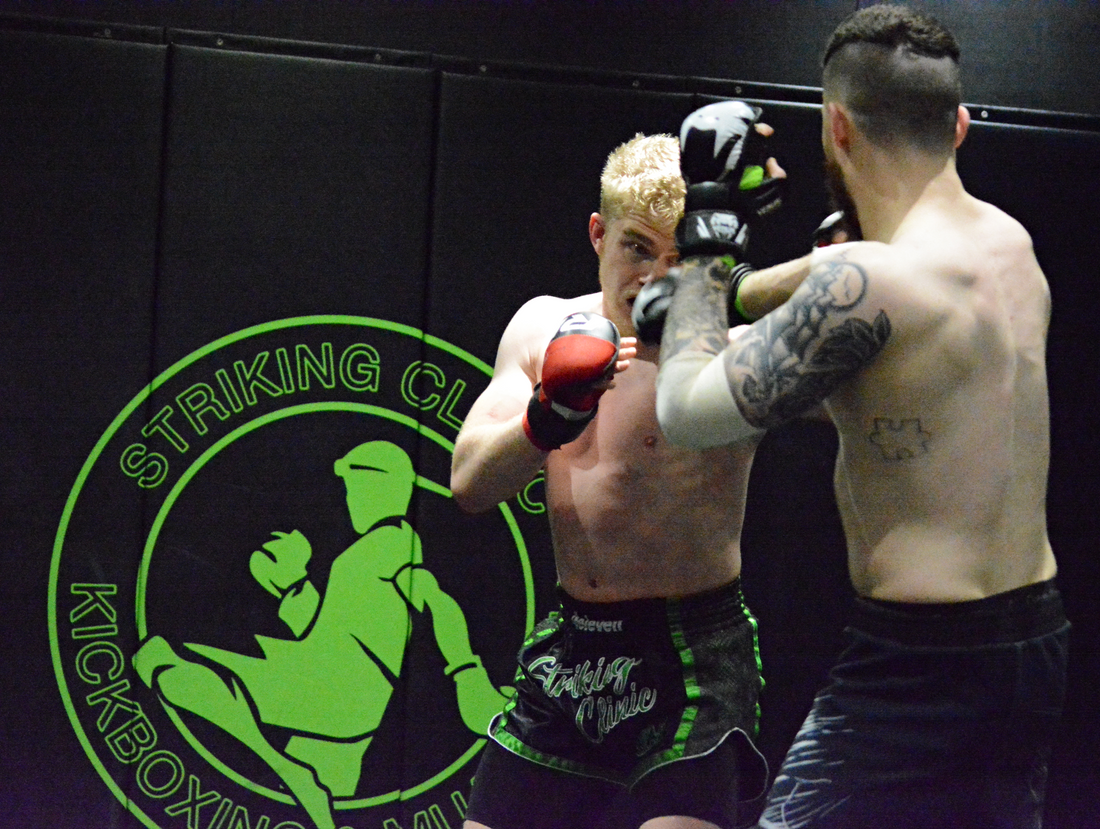
K1 Kickboxing Explained
Share
It's not uncommon to have heard of, or even had some experience with martial arts, Karate, Judo, Jiu Jitsu are the most common 3, with Muay Thai and Tae Kwon Do throwing their hats into the ring as of late, however there is very little known in the UK about K-1. This is out specialty as Striking Clinic, so it seems pretty clear that we should take a deep-dive into the history and style of K-1 Kickboxing.
K-1 is a combat sport that combines elements of boxing and martial arts, including karate, kung fu, and Muay Thai. K-1 is a specific type of kickboxing that was established in Japan in 1993. The "K" in K-1 stands for Karate, Kung Fu and various styles of kickboxing including Dutch Style, Western and Muay Thai.

K-1 kickboxing quickly gained popularity, and its set of rules became the official kickboxing style. The organization is known for its heavyweight division fights and Grand Prix tournaments. Through the Grand Prix series, K-1 was able to crown legendary figures through unforgettable battles. Today, K-1 kickboxing is a fast-paced modern style of kickboxing practiced for self-defense, general fitness, or for competition.
History of K-1 Kickboxing

K-1 kickboxing is a professional kickboxing promotion that was established in 1993 by Kazuyoshi Ishii, a Japanese karateka. The organization was originally under the ownership of the Fighting and Entertainment Group (FEG). K-1 was considered to be the largest kickboxing organization in the world, and it was known for its heavyweight division fights and Grand Prix tournaments.
Creation by Kazuyoshi Ishii
Kazuyoshi Ishii created K-1 kickboxing with the idea of finding out which striking martial art is the best. The letter "K" in K-1 stands for karate, Kung Fu, kickboxing, and Kempo. The first K-1 event was held on April 30, 1993, at the Tokyo Dome. The event featured a mix of martial arts styles, including kickboxing, karate, and Muay Thai.
Rise and Evolution
K-1 kickboxing quickly gained popularity and became one of the most recognized promotions globally. The organization hosted some of the largest fights in combat sports history. In 2012, K-1 Global Holdings Limited acquired the rights to K-1 kickboxing, and the organization was rebranded as K-1 Global. The new company aimed to bring back the glory days of K-1 and continue the legacy of the organization.
Since then, K-1 Global has continued to evolve and grow, hosting events around the world and featuring some of the best fighters in the sport. The organization has also introduced new weight classes and rules to keep the sport fresh and exciting.
Overall, the history of K-1 kickboxing is a story of innovation and evolution. From its creation by Kazuyoshi Ishii to its acquisition by K-1 Global Holdings Limited, the organization has continued to adapt and grow, cementing its place as one of the premier kickboxing promotions in the world.
Understanding K-1 Kickboxing

If you're curious about K-1 Kickboxing, you're in the right place. This section will give you a brief overview of the sport, its format, and its relation to other martial arts.
Relation to Martial Arts
K-1 Kickboxing is a combat sport that combines elements of karate, Kung Fu, kickboxing, and Kempo. It emerged in Japan in 1993 with the goal of determining which striking martial art is the most effective. K-1 Kickboxing has since become a worldwide organization known for its heavyweight division fights.
The Sport's Format
K-1 Kickboxing is a fast-paced sport where fighters compete in a boxing ring. Each fight consists of three three-minute rounds, which means fighters can fight at a high pace throughout the entire fight. Fighters can use punches, kicks, and knee strikes to hurt their opponent and finish the fight.
K-1 vs Kickboxing vs Boxing
K-1 Kickboxing is often compared to kickboxing and boxing. While all three sports involve striking, they have different rules and formats. Kickboxing and K-1 Kickboxing allow the use of kicks and knee strikes, while boxing only allows punches. K-1 Kickboxing is also known for its fast pace and high-energy fights.
That's a brief overview of K-1 Kickboxing. Now that you know a little bit about the sport, you can dive deeper into the world of combat sports.
Rules and Regulations

K-1 kickboxing is a fast-paced modern style of kickboxing with its own set of rules and regulations. Here are some of the most important rules you need to know:
Scoring System
In K-1 kickboxing, a fighter can win a match by knockout, technical knockout, or decision. A knockout occurs when a fighter is knocked down and unable to continue fighting within a count of ten seconds. A technical knockout occurs when a fighter is deemed unable to continue fighting due to injury or exhaustion.
If the fight goes the distance, the winner is determined by a points system. The judges score each round based on the number of effective strikes and techniques landed. The fighter with the most points at the end of the match wins.
Referee and Judges
The referee is responsible for ensuring that the fighters follow the rules and regulations of the match. They also have the power to stop the match if they feel that a fighter is in danger or if they are not following the rules.
The judges are responsible for scoring each round of the match. They use a 10-point must system, where the winner of the round is awarded 10 points and the loser is awarded 9 points or less. If the round is deemed even, both fighters are awarded 10 points.
K-1 kickboxing also has specific rules regarding kicks, punches, elbows, knees, throws, sweeps, and clinching techniques. Fighters are not allowed to strike their opponents below the belt or in the back of the head.
Overall, K-1 kickboxing is a highly technical and exciting combat sport that requires skill, strategy, and athleticism.
Equipment and Attire

When it comes to K-1 kickboxing, there are specific rules and regulations that govern the equipment and attire used by fighters. Here's what you need to know about the gear required for K-1 kickboxing.
Gloves and Wraps
K-1 kickboxing fighters are required to wear gloves that weigh between 8 and 10 ounces. The gloves must be approved by the governing body and must be in good condition. Fighters are also required to wear hand wraps under their gloves to protect their hands during fights. These wraps must be at least 4.5 metres long and made of a soft, non-elastic material.
Shorts and Groin-Guard
K-1 kickboxing fighters must wear shorts that are approved by the governing body. These shorts must be comfortable and allow for a full range of movement. Fighters are also required to wear a groin guard to protect themselves during fights. The guard must be made of a hard, non-flexible material and must be approved by the governing body.
In summary, K-1 kickboxing fighters must wear gloves, hand wraps, shorts, and a groin guard during fights. All of these items must be approved by the governing body and must be in good condition. By following these rules, fighters can ensure that they are protected during fights and can compete safely and fairly.
K-1 Kickboxing Training

If you're interested in K-1 kickboxing, you might be wondering what kind of training is involved. K-1 kickboxing is a fast-paced, full-contact sport that requires a great deal of skill, strength, and endurance.
To become proficient in K-1 kickboxing, you'll need to train regularly with a qualified instructor. Your training will likely include a variety of exercises and techniques designed to improve your speed, agility, power, and stamina.
Some common training methods used in K-1 kickboxing include:
- Shadowboxing
- Pad work
- Sparring
- Bag work
- Strength and conditioning exercises
In addition to physical training, K-1 kickboxing also requires mental discipline and focus. You'll need to learn how to stay calm and focused under pressure, and how to strategize and adapt to your opponent's movements.
Overall, K-1 kickboxing is a challenging but rewarding sport that can help you improve your fitness, strength, and self-confidence. With the right training and dedication, you can become a skilled K-1 kickboxer and enjoy all the benefits that come with this exciting martial art.
Sound like something you're keen to get involved in? Feel free to reach out to us, or book a 1 week free trial to get the feel of what we're all about!
